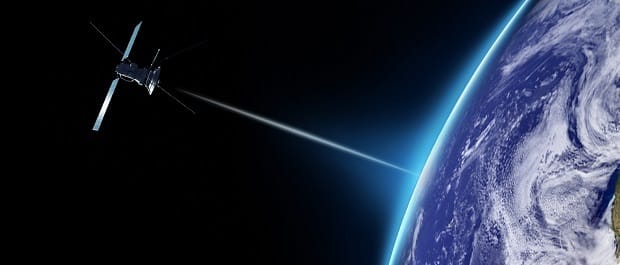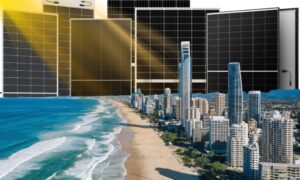Giant solar-powered space stations are on the radar of China, Japan and the European Space Agency, which is considering funding projects that could see solar energy “beamed” back to Earth.
In a move the would turbocharge the battle against climate change and the use of fossil fuels, space-based solar power stations would be able to float in orbit and harvest and transmit energy around the clock.
The world has seen a considerable uptake in renewable technologies like wind and solar in recent years, and battery solutions have made it possible for homes and businesses to run almost exclusively off renewables – for a certain period of time. The challenge remains that any prolonged period of low sunshine, prolonged cloud and rain and/or zero wind limits the production of renewable energy products.

So while the prospect of space stations delivering a non-stop stream of solar energy back to Earth may sound like something from a James Cameron movie, improved technologies and reduced costs have made this prospect something the ESA could actually fund in the future which China already has ‘Project Omega’ which hopes to achieve this by 2050.
Believe it or not, the concept of solar stations in space began in the 1920s
Russian rocket scientist Konstantin Tsiolkovsky was a pioneer of astronautic theory and is regarded to be one of the founding fathers of modern space travel and the Soviet space program. Even back then, he was dreaming big after growing up reading the science fiction work of Jules Verne (author of Journey to the Centre of the Earth, From the Earth to the Moon and Twenty Thousand Leagues Under the Sea).
Tsiolkovsky achieved many firsts in his career, including being the first to state the correct theory of rocket power in a scientific paper published in 1903. He proposed theories including multistage rocket and liquid oxygen and hydrogen propellants used as fuel that would eventually become a reality. He also had many views and ideas that were too big for the 1920s and the limited technologies available, but his theory that solar-powered space stations could one day become a reality has been explored by many since.
How realistic are solar-powered space stations in the near future?
There is a large reason why an idea formed a century ago has not come to fruition – practicality. While technology has advanced in amazing new ways in that time, the process of transporting the large items of hardware into space where they would be assembled is still too cost-prohibitive.
Despite advances in technologies, to make a solar-powered space station viable, it would likely have to be 10km2 – roughly the same size as 1400 football pitches. The logistics of transporting that volume of materials into space and assembling would be astronomical.
The second – and perhaps more important – the challenge is how the energy harvested from the sun would be transmitted back to Earth. The current theoretical plan would involve electricity from the solar cells being transformed into energy waves and using electromagnetic fields to transfer them down to an antenna on Earth. Currently, this technology is embryonic, and most of the power is lost in transmission. So maybe Tsiolkovsky’s dream is still aways off.













































